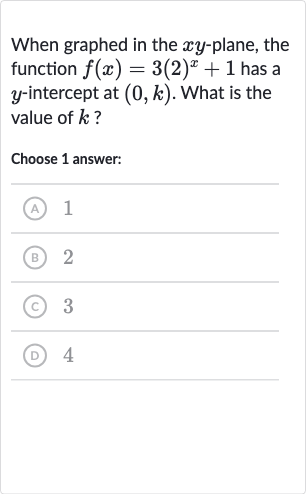Full solution
Q. When graphed in the -plane, the function has a -intercept at . What is the value of ?Choose answer:(A) (B) (C) (D)
- Evaluate at : To find the y-intercept of the function, we need to evaluate the function at . The y-intercept occurs where the graph of the function crosses the y-axis, which is when .
- Substitute : Substitute into the function to find the value of .
- Calculate : Calculate the value of raised to the power of , which is .
- Multiply by : Multiply by the result from the previous step.
- Add : Add to the result from the previous step to find the value of , which is the y-intercept .
More problems from Domain and range of quadratic functions: equations
QuestionGet tutor help
QuestionGet tutor help
QuestionGet tutor help
QuestionGet tutor help
QuestionGet tutor help
QuestionGet tutor help
QuestionGet tutor help
QuestionGet tutor help

